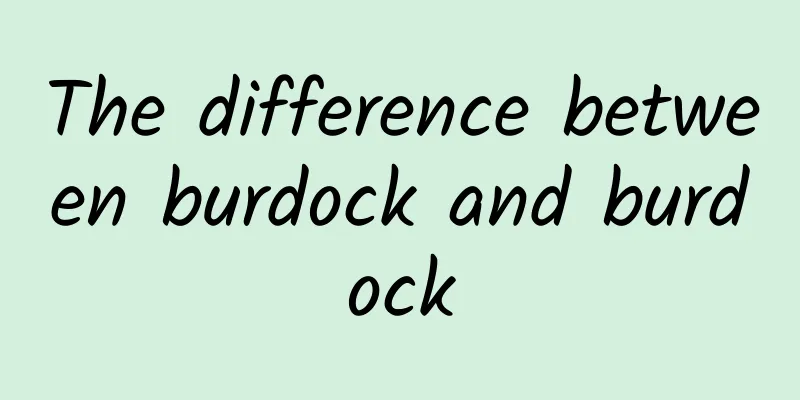Can red ginseng be taken for a long time?

|
Red ginseng is a very precious Chinese medicine and also a tonic with high nutritional value. It mostly grows in Jilin, Liaoning and other places in my country. Red ginseng not only has high edible value, but also can greatly replenish vital energy, restore pulse and strengthen the body. It also has high medicinal value. It can reduce fatigue and has a certain improvement effect on myocardial weakness. It also has anti-allergic shock and cardiotonic effects. So can red ginseng be taken for a long time? Let me give you a detailed introduction below. From the perspective of health care, red ginseng is an excellent tonic for those with insufficient qi and blood and yang deficiency. Anyone who often feels cold, has cold hands and feet, feels dizzy and tired, has weak limbs, is easily fatigued, has shortness of breath, feels cold in the stomach, has long-term diarrhea, suffers from insomnia, has impotence and frequent urination can choose red ginseng as a tonic. However, the dosage should be reduced appropriately in summer. The warm nature of red ginseng will destroy the balance of yin and yang in normal people, increase the weight of yang heat, and produce "getting angry" symptoms such as dry mouth, blisters on the lips, and nose bleeding. This situation is more obvious in the hot summer. But as long as you stop taking the medicine in time, the above symptoms will disappear. People with weak constitutions need to take red ginseng for a long time. To prevent side effects, they should take the medicine intermittently, taking it for 7 days and stopping for 2 days. Red ginseng can improve human immunity, resist fatigue, resist radiation, inhibit tumors, and adjust the human endocrine system. Red ginseng is suitable for the elderly and those with long-term illness and weak constitution. There are many daily uses for red ginseng. You can cut it into slices and hold it in your mouth for a while before chewing it, make tea with it, grind it into powder and swallow it, or make a soup or stew it. Among them, chewing is the simplest way to take it. Cut the red ginseng into thin slices, take 2-3 slices (about 3 grams) and hold them in your mouth for a while, chew them carefully and swallow them when the saliva in your mouth is abundant. Or you can make tea with it, cut the red ginseng into thin slices, take 2-3 grams and put it in a bowl or cup, add boiling water to brew it, cover it and simmer it for 5 minutes before drinking it, repeat several times and then chew and swallow the ginseng slices. When grinding the ginseng into powder, grind it into fine powder and swallow it every day. The dosage of red ginseng used in this method is relatively small, and the specific dosage can be determined according to personal constitution. Generally, 1-1.5 grams each time is enough. The above is the knowledge I introduced to you about whether red ginseng can be taken for a long time. In fact, red ginseng is a very effective traditional Chinese medicine, but there are many precautions when consuming red ginseng. It is not suitable for people with yin deficiency, hyperactivity of fire, or uncontrolled high blood pressure. In addition, red ginseng should not be taken in excess, and you need to pay attention to seasonal changes when taking it. The cool weather in autumn and winter is the best season to eat red ginseng. |
<<: What are the effects of anthocyanins on the skin?
>>: Can Albizzia julibrissin be taken for a long time?
Recommend
The efficacy and function of Xinjiang Veratrum
Chinese medicinal materials are very effective in...
The efficacy and function of Tuma
Tumahui has a long history, and up to now, it has...
The "COVID-19 Oral Drug" is here! Virus, retreat! Retreat! Retreat!
On July 25, the National Medical Products Adminis...
A map tells you where to see the most beautiful volcanic lake in China
Loading long image... Source: National Geographic...
This white grass is really magical.
I knew a story before, that Qian Mu's father ...
The efficacy and function of antler ganoderma
Deer are a symbol of longevity. Deer antler is a ...
"If a person sleeps for three hours, his life is as fragile as paper"? What are the three hours? These abnormalities may be the body's "call for help"...
Expert of this article: Zhao Wei, MD, associate c...
The efficacy of raspberries is extremely valuable
As for the copy fruit, many people know that it b...
What foods are incompatible with wolfberry?
Wolfberry is a Chinese herbal medicine with great...
Experts warn: Beware of the trend of younger people having plastic surgery! But the sooner you do this kind of surgery, the better.
In recent years, students flock to get plastic su...
The warmest winter in Sichuan is here!
This is the most unfamiliar scenery in Sichuan, a...
The efficacy and function of rice flower fruit
As the pressure of modern life increases, more an...
The owner died due to an elevator failure! What to do when the elevator is in danger? Learn the self-rescue rules →
On the evening of February 18, an elevator in a r...
What are the effects and functions of Chuanbei Snow Pear?
We all like to eat pears. The pears from Laiyang ...
Smith Micro: Business travelers interested in hotel mobile services
Mobile devices, due to their flexibility and conv...









